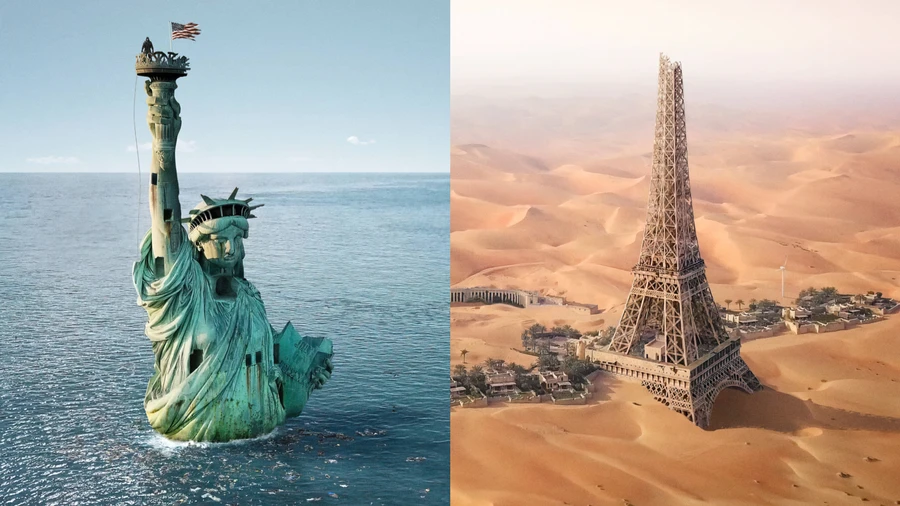Published
3 years agoon
By
Joe Pee
For most of us, envisioning a world battered by the climate crisis is almost too excruciating. After all, it would require us to swallow the inconvenient truth and face our deepest fears.
But for French photographer and digital artist Fabien Barrau, speculating the extent of the climate apocalypse is necessary to jolt us out of our cosy existence and make us face the fact that we’re headed into a dystopian world of our own making.
Thus was born “News From The Future,” a series by Barrau that explores what famous architectural landmarks around the world will look like in the aftermath of the climate crisis, created with the help of his drone and epic Photoshop skills.
“I remain convinced that a simple image can have more impact on people, especially the youngest, to understand the probabilities of the consequences of inaction,” Barrau told VICE. Barrau sees himself as an explorer from the future as he navigates a new world mired in desertification, inundation, destruction and devastation.
“This series is a personal work of anticipation of the consequences of climate change,” he explained. “It is not a scientific work but an artistic work where I am inspired by the probabilities of the Intergovernmental Panel on Climate Change (IPCC) data.”
A report released by the IPCC in February warned that the window to avoid the most severe impacts of climate change is about to close, and that we as a species have to act with urgency to avoid its most catastrophic consequences.
To visualise these catastrophic consequences, Barrau digitally retouches drone footage and stock images – taking the Eiffel Tower and the Colosseum to arid extremes, submerging the Statue of Liberty in waist-deep floods (the statue’s waist, not ours), while the Arc De Triomphe becomes a marine ornament.
Barrau’s series toes the line between surrealism and dystopia, and is heavily influenced by films and art that explore these genres.
“Since my childhood, I have been a big fan of the post-apocalypse theme and the collapse of a civilization,” said Barrau, adding that he deliberately attempted to make his series cinematic as an ode to his influences. For example, the image of two whales swimming above Paris’ Arc de Triomphe is a tribute to the French artist Roland Cat, whose work in the 1970s and ‘80s imagined sea creatures hovering above drowned cities. He also credits films like Planet of the Apes, Mad Max, Akira and the National Geographic documentary Aftermath: Population Zero as major influences.
Having worked in the field of photography and design for more than 30 years, Barrau – who works with brands and agencies as a photo retoucher – often invokes a sense of environmentalism through his imagery.
For example, his most recent series also reimagines mesmerising landscapes through a conservationist lens, interpreting wildfires in the Amazon as a macaw pleading for help, or turning a grove of coniferous trees into a bear-shaped aerial landscape to stress the relationship between nature and wildlife. His extreme images are an attempt to grab attention as he unleashes thought-provoking stories that emphasise the need of the hour.
“I like to do landscape and architecture photography and I had the chance to travel to many countries to photograph fabulous environments,” he said. “But over the years, I have increasingly felt the devastating effects of this climate crisis on biodiversity, landscapes and people. It seems difficult to me to continue to pretend that nothing changes.”

























